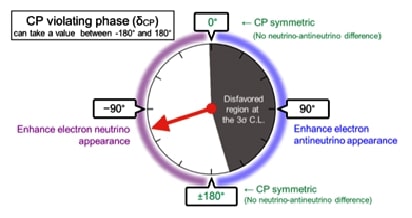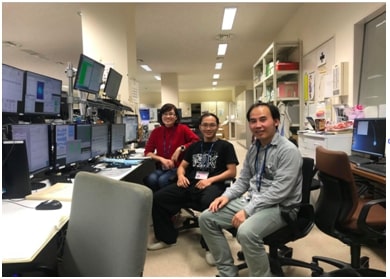Activities
ICP News
Date: 17-05-2021


Participation in the T2K International Experiment and Publication in Nature
The Institute of Physics, with the participation of Associate Professor Dr. Nguyễn Thị Hồng Vân, collaborated with the international T2K experiment and published groundbreaking findings in Nature, showing indications of CP violation in neutrino oscillations. This marks a crucial step toward understanding whether neutrinos and antineutrinos behave differently, and whether there is CP violation in the lepton sector.
Reference: N. T. Hong Van with the T2K Collaboration, “Constraint on the matter–antimatter symmetry-violating phase in neutrino oscillations,” Nature 580, 339–344 (2020); https://www.nature.com/articles/s41586-020-2177-0
The T2K (Tokai to Kamioka) experiment, located in Japan, investigates a neutrino beam sent from Tokai to Kamioka (~295 km). Involving around 500 scientists from 70 institutions across 12 countries (including Vietnam’s Institute of Physics, a member since 2017), the experiment announced its key result on April 15, 2020, indicating CP violation in neutrino oscillations using beams generated from the J-PARC facility.
Reference: N. T. Hong Van with the T2K Collaboration, “Constraint on the matter–antimatter symmetry-violating phase in neutrino oscillations,” Nature 580, 339–344 (2020); https://www.nature.com/articles/s41586-020-2177-0
The T2K (Tokai to Kamioka) experiment, located in Japan, investigates a neutrino beam sent from Tokai to Kamioka (~295 km). Involving around 500 scientists from 70 institutions across 12 countries (including Vietnam’s Institute of Physics, a member since 2017), the experiment announced its key result on April 15, 2020, indicating CP violation in neutrino oscillations using beams generated from the J-PARC facility.

Background:
In particle physics, CP symmetry refers to the combination of charge conjugation (C) and parity transformation (P). CP violation was first observed in quark interactions in 1964 and is considered essential (as suggested by Sakharov) to explain the matter-antimatter asymmetry in the universe. However, CP violation in quarks is insufficient to fully explain this imbalance. While CP violation has only been confirmed in the quark sector, it remains unobserved in the lepton sector. Theories suggest that CP violation in leptons could account for the matter-dominated universe through a process called leptogenesis.

In neutrino physics, CP violation can be measured via the transition from muon neutrinos to electron neutrinos and their antiparticle counterparts. The parameter describing this CP violation in neutrino oscillations, called the Dirac phase (δCP), ranges from –180° to 180°. T2K was the first to exclude nearly half of the possible δCP values with 99.7% (3σ) confidence, beginning to unveil a fundamental property of neutrinos. Future measurements with larger datasets aim to determine whether CP violation in leptons is stronger than in quarks.
